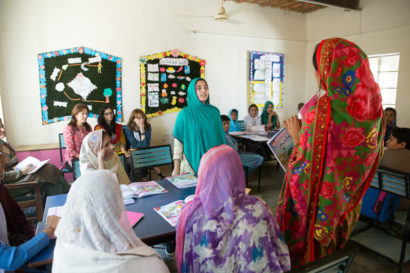Tag: Reproductive Health
The Delivering Reproductive Health Results (DRHR) programme used social franchising (SF) and social marketing (SM) approaches to increase the supply of high quality family planning services in underserved areas of Pakistan. The authors of this paper assessed the costs, cost-efficiency and cost-effectiveness of DRHR to understand the value for money of these approaches. Financial and… Read more
This is the 2014 annual review of DFID’s £17M Ghana Adolescent Reproductive Health (ARH) programme (2013 – 2017). It is the second annual review of the programme and covers the period from January to December 2014. The ARH programme is working to improve reproductive health knowledge and behaviour for up to 350,000 adolescents and strengthen… Read more
Although in parts of South Sudan the situation is unstable which necessitates humanitarian action, in other parts of the country development programmes are taken up with the communities. In Northern and Western Bahr el Ghazal states, Aweil North and Wau county respectively, the South Sudan Health Action and Research Project (SHARP) works on improving reproductive… Read more
Abstract Background: Annually over 520,000 newborns die from neonatal sepsis, and 60,000 more from tetanus. Estimates of the effect of clean birth and postnatal care practices are required for evidence-based program planning. Objective: To review the evidence for clean birth and postnatal care practices and estimate the effect on neonatal mortality from sepsis and tetanus… Read more
In experimental animals, maternal diet during the periconceptional period influences the establishment of DNA methylation at metastable epialleles in the offspring, with permanent phenotypic consequences. Pronounced naturally occurring seasonal differences in the diet of rural Gambian women allowed us to test this in humans. We show that significant seasonal variations in methyl-donor nutrient intake of… Read more
An adequate inter-birth interval is of great importance because it enables a mother to recover her physical and emotional strength between pregnancies and confers upon the child advantages of better health and development (Morley, 1977). Breast feeding is the naturally evolved method of ensuring an adequate inter-birth interval but the contraceptive effect of breast feeding… Read more
The Kaiser Family Foundation mapped the geographic landscape of global health donor assistance for family planning (FP) and reproductive health (RH). Recipient countries typically received assistance for FP/RH from multiple different donors. Looking over the period 2009-2011, the report found: The average number of donors present in each recipient country was 8. Eleven recipient countries… Read more
Ethiopia is unusual within the region in having very low levels of sex before marriage. According to the 2005 DHS well over 90% of single women are virgins. Ensuring the health of adolescent girls is vital to the nation. Ethiopia has made progress in improving youth’s health; yet, young women still suffer high rates of… Read more
Based on UN MDG data for married women, countries that achieved a 3% or 5% increase in a year or a similar average over more years include The Gambia, Malawi, Rwanda, Uganda and Zambia. Statistics from other sources include increases shown in Ethiopia, Mozambique and Afghanistan. The report includes a table with current contraceptive use… Read more
The report has sections on the following areas: Education and Fertility Education and Fertility in India and the Region Economic Returns to Women’s Education in India Education and Reproductive Health Initiatives Adolescent Reproductive Health Programmes In reviews of regional and global studies: Women with primary education tend to have higher fertility than women with secondary–plus… Read more
Development agencies have found two predictable indicators for longevity among women in developing countries: accessible clean water and literacy skills. Of the 1 billion illiterate people in the world, two thirds of them are women. Literate women average 2 children per family while illiterate women give birth to 6–8 children. Educated women are more likely… Read more

